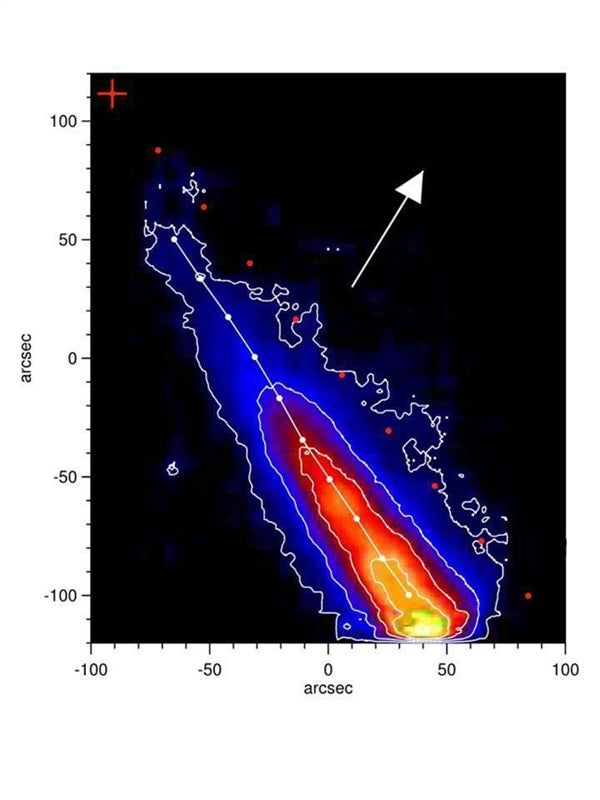When Comet ISON was discovered in the autumn of 2012, scientists and amateur astronomers alike hoped for a “comet of the century.” On November 28, 2013, only 1.1 million miles (1.8 million kilometers) would separate ISON from the Sun. Due to its brightness, the comet promised to be a unique research object and, should it survive its flyby of the Sun, a stunning celestial phenomenon in the weeks preceding Christmas. But the story took a different course. Already during the final phase of the approach to perihelion, the comet’s tail grew fainter and fainter. It soon became clear that ISON’s activity had ceased or that the nucleus most likely had completely disintegrated.
However, what exactly happened on November 28, 2013, is still unclear. Did the comet break apart before it reached the point closest to the Sun? Or did it withstand the indescribable heat a while longer? Did the dust tail that could be discerned after the flyby maybe even block the view of a remaining solid nucleus? “Our measurements and calculations indicate that ISON ran out of steam before perihelion,” said Werner Curdt from MPS. Apparently, 8.5 hours before the comet was to pass by the Sun, a short and violent outburst occurred that set free a great amount of dust. After that, the dust production completely stopped within a few hours.
Key to the new insights were images of the dust tail, which the MPS researchers obtained on November 28 between 5:56 pm and 6:01 p.m. Central European Time near closest approach with the instrument SUMER on board SOHO. Hours earlier, stunning shots taken by SOHO’s coronagraph Large Angle and Spectrometric Coronagraph (LASCO) had shown the long stretched tail of the onrushing comet. In order to make structures in the vicinity of our star visible, the instrument occults the solar disk — as in an artificial solar eclipse. However, ISON’s trajectory took the comet so close to the Sun that the final phase was obscured by the occulter.
“The only instrument that could obtain serviceable data at this time was SUMER,” said Curdt, who has been head of the SUMER team since 2002. “For everyone involved, this was a huge challenge.” The detection of a comparatively faint comet is not what the instrument was designed for, namely to investigate plasma flows, temperatures, and density in the Sun’s hot outer atmosphere.
By operating the instrument in camera mode, the researchers were able to record images of the comet’s tail in ultraviolet light with a wavelength of 121.6 nanometers. This light is emitted from the solar disk and reflected by the dust particles into space.
The SUMER images show a slightly curved, pointed tail with a length of at least 150,000 miles (240,000km ). No signs of a particularly bright area were found at the predicted position of the comet, which would have been indicative of an active nucleus. To understand what processes generated this tail shape, the researchers compared the images with computer simulations. They calculated what the tail would look like under certain assumptions regarding the size of the dust particles, their speed, and the time of their emission.
“We were not able to reconstruct anything resembling our images, assuming that ISON was still active during the SUMER observations,” said Hermann Böhnhardt from MPS. The model is most consistent with a scenario where ISON has stopped producing dust and gas hours before. Whether the nucleus had been completely disintegrated cannot be settled without doubt, Böhnhardt said. Several signs indicate this — for example, the distinct increase in dust production approximately 8.5 hours earlier. The scientists’ calculations show that the comet must have emitted around 11,500 tons of dust at this time, equivalent to a sphere with a diameter of 919 feet (280 meters).
It is most likely that the final breakup of the nucleus triggered this dusty firework. Gas and dust trapped inside the nucleus would have been abruptly released in such an event.










